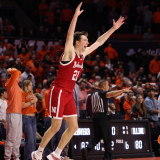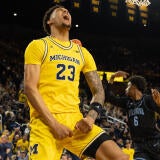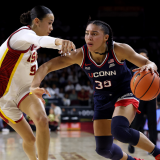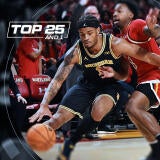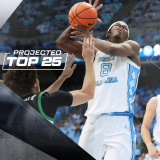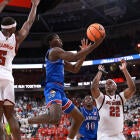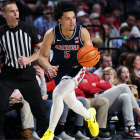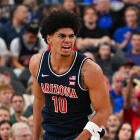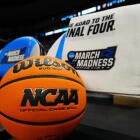NCAA recommends rule changes for men's basketball: technical fouls for flopping, experimenting with six fouls
The men's basketball rules committee made these five recommendations for the 2021-22 college basketball season
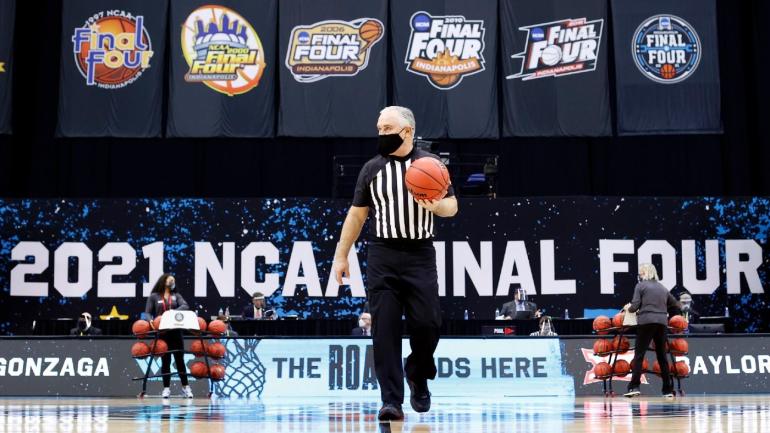
Technical fouls for flopping, changing from five to six total fouls allowed, and a tweak to how timeouts are treated. These are among the changes the NCAA men's basketball rules committee announced Friday after three days worth of meetings to discuss what rule changes the sport should consider.
There were the 13 major agenda items (as previously detailed on CBS Sports) heading into the committee's meeting in Indianapolis. In the end, five things -- including some previously undisclosed items -- wound up getting pushed through for recommendation for next season or experimentation first in the 2022 NIT.
- Flopping can result in a technical foul
- Increase to six fouls, with a maximum of four fouls allowed per half (experimental in NIT)
- Allowance at the league level for coaches to use technology, live statistics and video on the bench
- Team timeouts can serve as/replace media timeouts
- Shot clocks will now be able to display tenths of a second
All rules, if passed in June by the Playing Rules Oversight Panel (PROP), would be in effect for next season.
Flopping can earn a technical foul
Flopping has been a nuisance for many years. Per the NCAA's release: "Committee members ... think adding the technical foul component is the next step in hopes of eliminating this tactic from the game." The rule change would eliminate a warning for flopping and instead lead to a technical when a "fake being fouled" situation is clear and obvious. This would result in the other team shooting one foul shot. The player called for the technical foul would not accumulate a personal foul.
"After two years of using warnings, we didn't feel like we were getting the results that we wanted," Colorado coach Tad Boyle, the outgoing chair of the rules committee, said. "We are trying to get flopping out of our game. We're asking the officials to call them when they happen."
Want more college hoops? The latest episode of Eye on College Basketball touches on Kentucky, Gonzaga, UCLA and possible rule changes.
Players getting six fouls
The modified six-foul rule has received a lot of attention and discussion in recent days, and the committee's intriguing recommendation is sure to add to the discourse. Here is how the six-foul protocol is defined by the NCAA:
"Under the experimental rule, any player called for four personal fouls in one half would be disqualified from playing the rest of the game. For example, a player who picks up four fouls in the first half would have to sit out the rest of the game. If a player has one foul in the first half, he would be disqualified after picking up four in the second half. If a player has three fouls in the first half, he would be disqualified after being called for three fouls in the second half."
The rule would only be used next season during NIT competition, where it would be put into trial for further scrutiny. It could once more be used in the 2023 NIT before the rules committee convenes again in two years to consider its next cycle of recommendations. The six-foul rule is on the table in an effort to better college basketball by allowing for the best players to remain on the court for as long as possible.
"It is an out-of-the box proposal," Boyle said. "What is great about having a committee is you never know what will take off or what won't. Certainly, we weren't going to support it as a permanent rule without experimenting with it first."
Technology on to the sideline
As for tablets and/or laptops allowed on the bench, conferences will need to apply for a waiver and then can determine on their own what technology will be permissible. The rule, for now, would not apply to nonconference games or the NCAA Tournament.
Tweaking timeouts
In a no-brainer, the rules committee suggested a simple way to streamline games and keep them as close to the two-hour window as possible: if or when a team calls a timeout, that timeout can serve as the media timeout so long as the media timeout hasn't already been used.
"Under this proposal, if a coach calls a timeout at the 18-minute mark, it will serve as the under-16-minute media timeout," the NCAA's release said. "If either team calls a timeout under the 16-minute mark, it will serve as the under-12-minute media timeout. Under this scenario, the next media timeout wouldn't occur until the under-eight-minute mark."
It makes for an uncomplicated, overdue tweak toward gameplay efficiency.
Tenths of a second showing on shot clock
The last recommendation is for schools to be allowed -- but not mandated -- to have the shot clock display tenths of second. It's something that's existed in the NBA for nearly a decade.
Rules up for discussion that were not recommended by the committee include quasi-quarters, widening the lane, removing offensive basket interference and eliminating the 10-second backcourt violation, among others. You can read about all the others that were up for debate here. PROP will now take these five action items, vet them, and can approve in early June.


